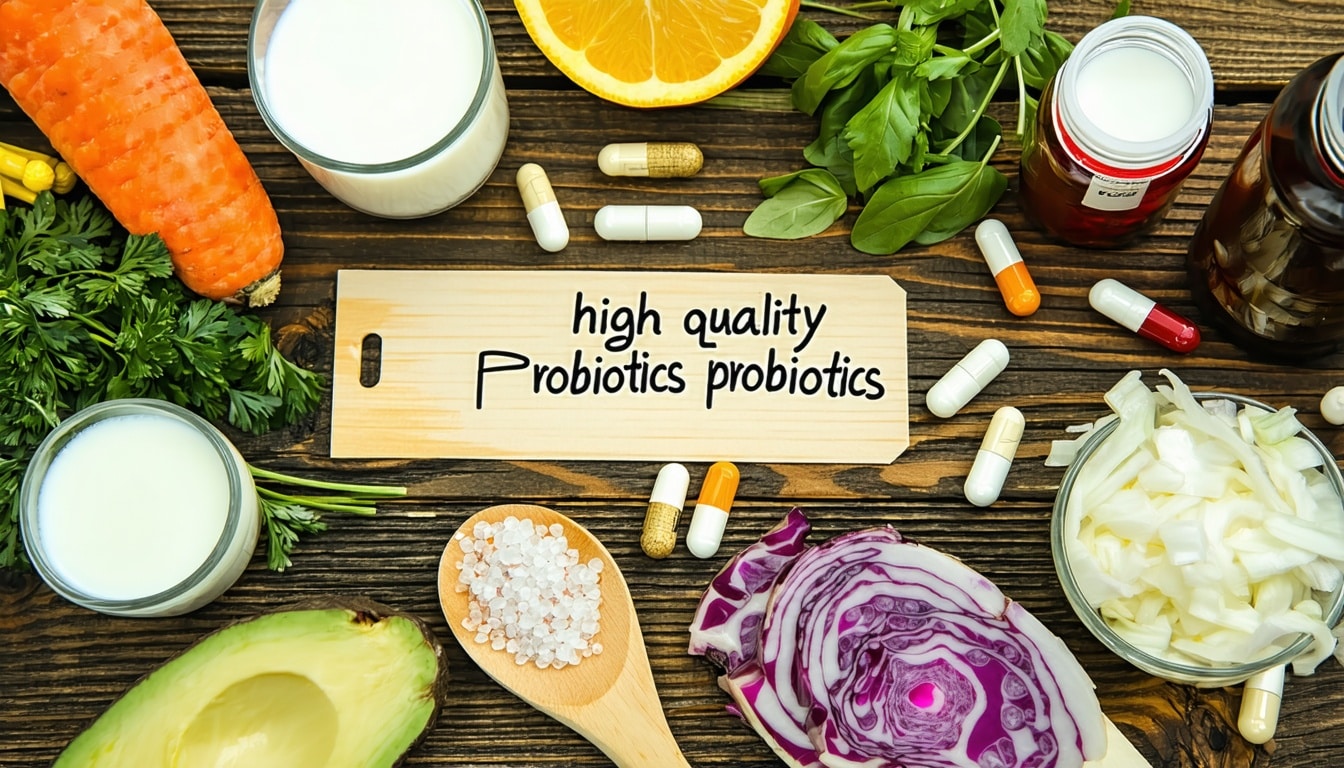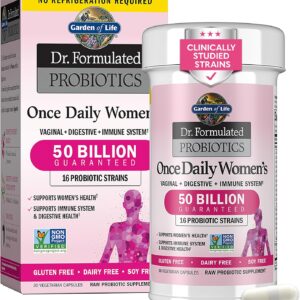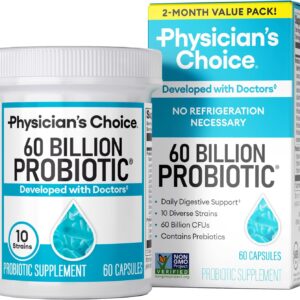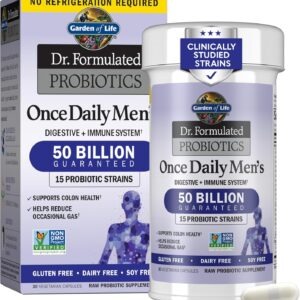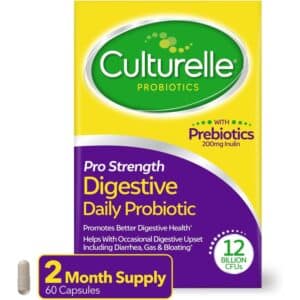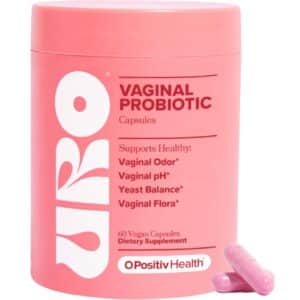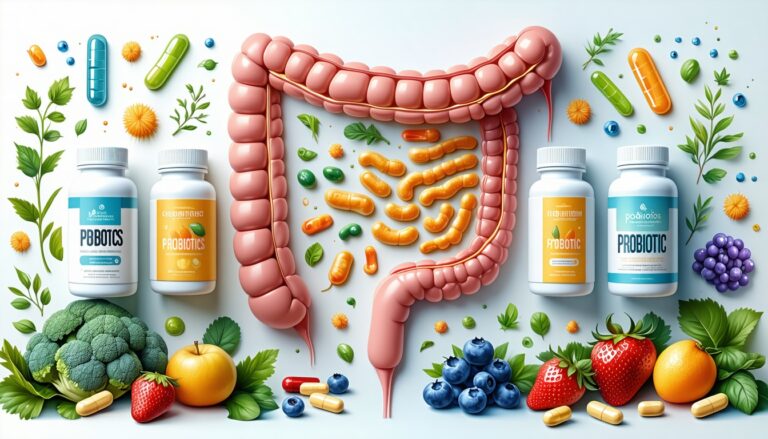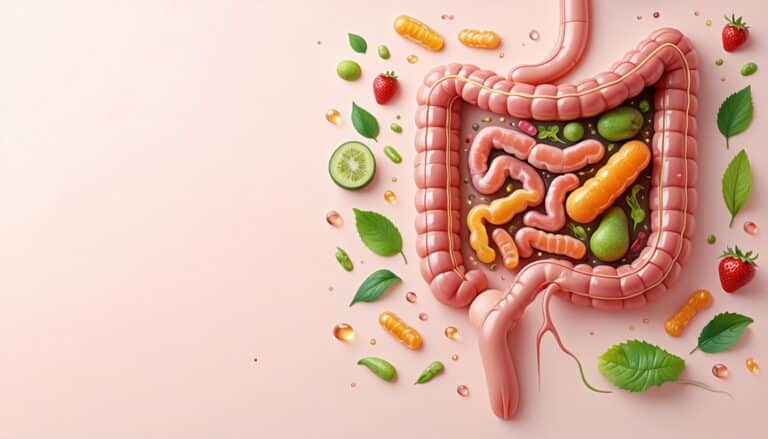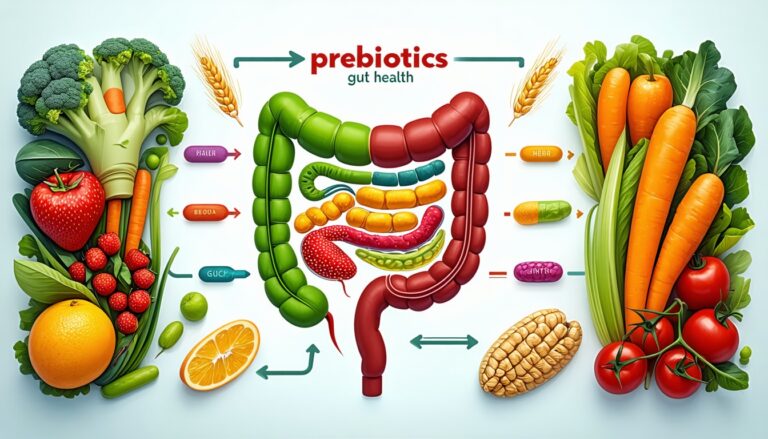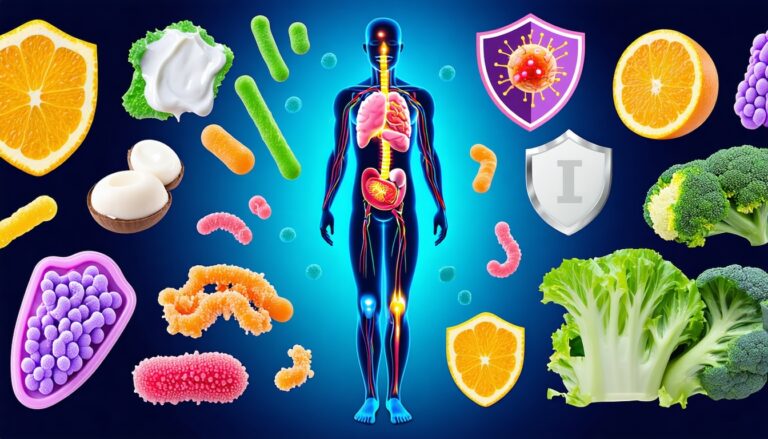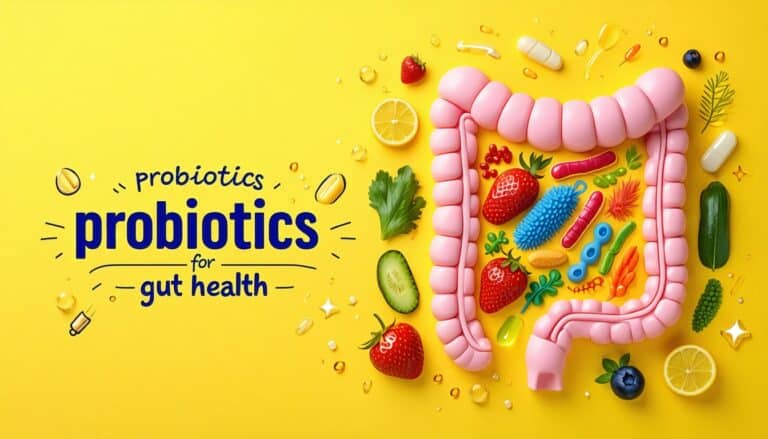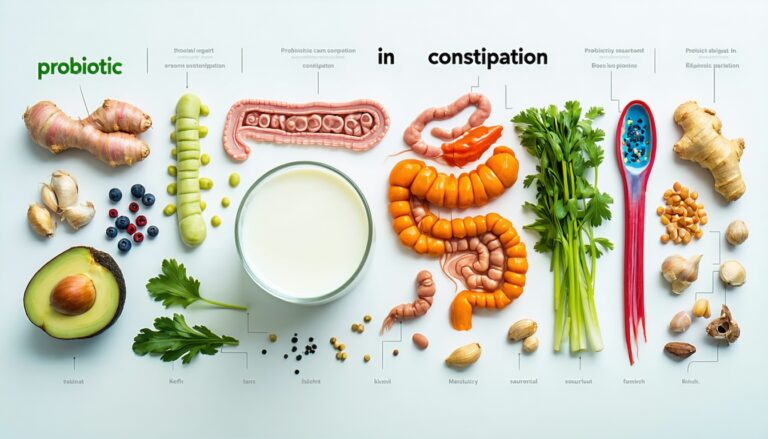High Quality Probiotics are more than just a wellness buzzword—they’re essential allies in your quest for optimal gut health and overall wellness. In a world where digestive issues, inflammation, and immune challenges are common, understanding what makes a probiotic truly effective is vital. This article explores the key traits of high-quality probiotics, explains their health benefits, and provides guidance on selecting the right strains and supplements to suit your unique needs. Whether you’re navigating antibiotic recovery or just aiming to feel your best daily, this guide breaks down what works—and why.
Understanding Probiotics
What’s the Deal with Probiotics?
Probiotics are tiny superheroes living in your gut, nearly invisible yet mighty, helping you feel your best. These “good” bacteria work wonders when you take them in the right amounts. They hang out in things like supplements and fermented goodies, doing their thing. According to the brainiacs at the International Scientific Association for Probiotics and Prebiotics, these tiny champions have got your back in more ways than one (NIH).
Their main gig? Keeping the crew of bacteria in your tummy in check. This translates to better digestion, fewer tummy tantrums from nasty bacteria, and possibly even a stronger immune defense. You might be thinking about adding probiotics to your day-to-day routine. If so, make sure you’re picking the real deal. Quality is king here – you wouldn’t want anything less, right?
Meet the Probiotic Squad
This bunch consists of various kinds of friendly bacteria and some yeasts, each with its own party trick. Here’s a look at what’s in the microbe lineup:
| Probiotic Strain | Health Perks |
|---|---|
| Lactobacillus | Keeps your digestion smooth, handles dairy like a pro, and may kick diarrhea’s butt. |
| Bifidobacterium | Makes sure your gut flora’s groovy, and might help with those irksome IBS and constipation woes. |
| Saccharomyces boulardii | A helpful yeast that stomps diarrhea, particularly the kind you might get from antibiotics. |
| Streptococcus thermophilus | This one loves yogurt, makes lactic acid, and might help you digest lactose better. |
These pals can be found in lots of gut-boosting probiotics or lurking in munchies like yogurt, kefir, sauerkraut, and kimchi. When you’re on the hunt for probiotics, check out the CFU numbers – they tell you how many live helpers are in there. You could find options with anything from 1 billion to a whopping 50 billion per dose, so pick what suits your needs best.
You’ve now got the basics to choose the right probiotics for you. Want more tips? Check out our other stuff on gut health wonders and digestive heroes.
Health Benefits of Probiotics
Probiotics aren’t just a passing fad—they’re tiny superheroes for your gut and more. Let’s chat about how these powerhouse bacteria can keep your tummy feeling good and help dodge some nastier stuff, too.
Gut Health and Digestion
First things first, our little probiotic friends love your gut! Probiotics like Lactobacillus acidophilus act like peacekeepers, balancing out those unruly bacteria round up from illnesses or popping antibiotics (WebMD). Keeping this mix right helps everything run smoothly, preventing those dreaded bathroom troubles.
Here’s a quick cheat sheet on what probiotics can do for you:
| Probiotic Strain | What it Does |
|---|---|
| Lactobacillus acidophilus | Keeps gut peace, keeps digestion happy |
| Bifidobacterium longum ssp. Longum | Shields against nasty gut bugs and inflammation |
| Lactobacillus rhamnosus GG | Cuts down on diarrhea from antibiotics |
| Saccharomyces boulardii | Calms diarrhea storms, steady gut vibes |
These friendly microorganisms can even slash your chances of getting antibiotic-related tummy upset by 36% and cut that unpleasant feeling by over 21 hours. Want more gut gossip? Check out the scoop on digestive probiotics and gut-friendly bacteria.
Inflammation and Disease Prevention
Probiotics also get in the ring against inflammation and disease. Strains like Bifidobacterium longum play defense, warding off issues like colon cancer and those pesky inflammatory bowel diseases (WebMD).
Here’s how they throw down:
| Probiotic Strain | Knocks Out |
|---|---|
| Bifidobacterium longum ssp. Longum | Potential blocker for colon cancer and bowel issues |
| Lactobacillus and Bifidobacterium combos | Slashes risk of severe gut disease in preemies |
Pump up your immune system and strengthen your natural defenses with quality probiotics—they’re like an everyday shield! Need ideas on which probiotics to load up on? Swing by gut health booster pills.
Making probiotics a regular part of your eat-in experience can transform your digestive well-being, curb inflammation woes, and keep illness at bay. For a guide on choosing right and using these gems to their fullest, head over to digestive helpers. Plus, discover the magic of prebiotics with our prebiotic perks for your tummy.

Selecting High Quality Probiotics
Grabbing the right probiotics can make a world of difference in reaping the health goodies you’re after. Here’s how to zero in on the top-notch ones.
Importance of Quality Assurance
You know picking the best probiotics is like choosing the right friend group—trust is everything. Quality assurance is your buddy here, making sure you’re getting what’s written on the tin. Without it, you might end up with a dud or something out of Sync with what your body really needs. Checking out those seals and stamps can arm you with the confidence to know you’re getting the real deal.
Key Certifications and Standards
Keep your peepers peeled for some must-see labels when scouting for probiotics. Here’s a quick cheat sheet for the badges that scream quality:
| Certification | Description |
|---|---|
| GRAS | This means “Generally Recognized as Safe,” courtesy of the FDA, and it’s the stamp of approval saying you’re not about to swallow something shady. |
| QPS | This global good-guy badge stands for Qualified Presumption of Safety, keeping probiotic strains honest and harmless. |
| ISO 17025 | Think of this one as a report card for labs, showing they’ve got their science hat on straight when testing supplements. |
| cGMP | Current Good Manufacturing Practices, making sure the folks making probiotics are up to snuff in keeping it clean and safe. |
| USDA Organic | When you see this, you know your probiotics are following the USDA’s playbook on being organic, and not just saying so. |
| NSF International / SQF | These ensure product hygiene and safety, a nod to the Global Food Safety Initiative (GFSI). |
Also, make double trouble sure your probiotics square up with FDA regulations. This means no monkey business about what’s inside, how many live bacterial pals you’re getting (looking at you, CFU counts), and how to take ’em right.
Hungry for more on probiotics? Check out probiotics for gut health or dive into probiotic supplements for gut health. Keeping these markers in mind will help you pick probiotics that are just as ready to back you up as you are to embrace them.
Probiotics and Specific Health Conditions
Probiotics jump in when things get rough in the health department. Let’s break down their role in battling two tough cookies: atopic dermatitis in kiddos and tummy troubles caused by antibiotics.
Atopic Dermatitis in Children
Eczema (that’s the fancy name for atopic dermatitis) makes kids itch like crazy and their skin gets all red and angry. But here’s the cool part—some magic from probiotics might calm things down. In fact, a 2018 research roundup found that these tiny warriors cut down eczema episodes in little ones.
Meet the good guys: Lactobacillus acidophilus and Bifidobacterium longum. They’re not just names from a sci-fi flick. These strains are game-changers, keeping your gut flora in check and making your skin happier. When your gut’s partying with the right bacteria, your skin feels better too; kind of like a domino effect for your immune system.
| Probiotic Strain | What It Does |
|---|---|
| Lactobacillus acidophilus | Fights bad bacteria; boosts gut wellness |
| Bifidobacterium longum | Tames inflammation; shields against allergic flare-ups |
Want the inside scoop on keeping your gut in tip-top shape? Dive into our pieces on gut health with probiotics and digestive health heroes.
Antibiotic-Associated Diarrhea
Antibiotics, although lifesavers, sometimes wipe out the good guys in your gut too, leaving you with an unwanted run to the loo. Probiotics deserve a cape for stepping in! Strains like Lactobacillus help rebuild what antibiotics chip away. They’re like a peacekeeping force for your belly, backed by research that shows they slash the diarrhea drama (WebMD).
Pop probiotics into your daily routine and shield your gut from the antibiotic chaos. It’s like restocking the shelves with helpful microbes after a big clean-out.
| Probiotic Strain | Fights Against Diarrhea |
|---|---|
| Lactobacillus acidophilus | Lessens symptoms; brings gut harmony back |
| Bifidobacterium longum | Prevents those antibiotic tummy troubles |
Eating probiotics? Easy-peasy. Check out our how-to for eating probiotic-rich foods and getting savvy with probiotic supplements.
By knowing how these microorganisms target eczema and antibiotic-induced diarrhea, you’re better equipped to keep your family feeling tops. So, arm up with fresh insights and let those probiotics work some wonders!
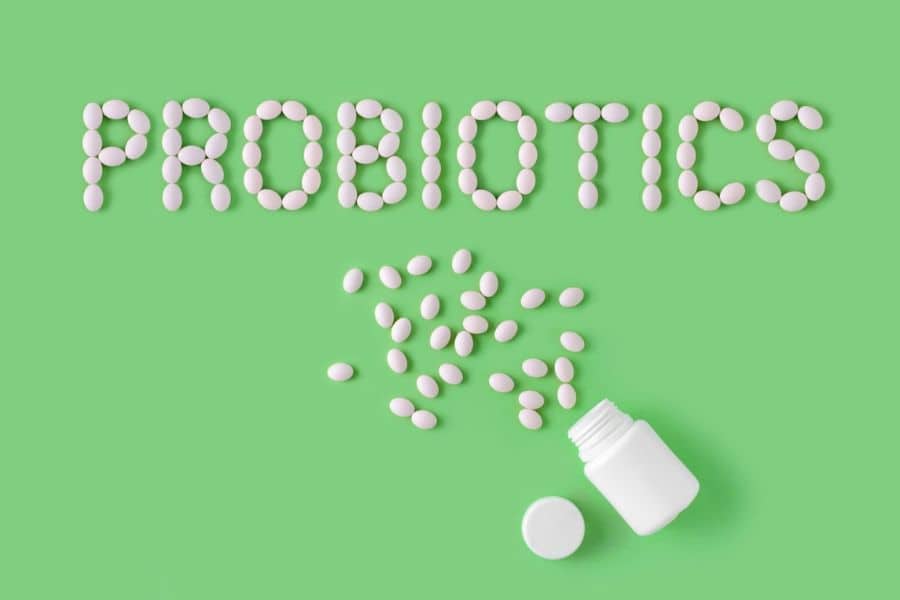
Practical Tips for Using Probiotics
Want to perk up your gut health and feel a bit more chipper every day? Probiotics can be just what you’re looking for! Let’s dive into some handy tips to get the best out of them and how to work them into your meals without a fuss.
Picking the Perfect Probiotic
Choosing a nifty probiotic doesn’t have to be like finding a needle in a haystack. Here’s how to narrow it down:
- Live Cultures on the Label: Keep your eyes peeled for labels shouting about live and active cultures—they’re the real deal!
- Go Big with CFUs: Aim for those with at least 1 billion CFUs. Why? It gives you a better shot at reaping the good stuff.
- Mix It Up with Strains: Seek out familiar names like Lactobacillus, Bifidobacterium, Bacillus, or Saccharomyces boulardii. Each brings different perks.
- Watch the Clock for Freshness: Pay attention to expiration dates. Over time, probiotics could just be a shadow of their former selves.
- Ask the Experts: Got a hunch something might not sit right with you? Chat it out with your healthcare provider for peace of mind.
Tossing Probiotic-Rich Foods Into Your Meals
Turns out, supplements aren’t the only way to load up on probiotics. Let’s peek at some tasty eats that naturally get your gut groovin’:
| Probiotic Food | What’s the Deal? |
|---|---|
| Yogurt | Fermented milk with live cultures. Scope out labels saying “live and active cultures.” |
| Kefir | This is like a sippable yogurt, fermented for maximum goodies. |
| Kombucha | Bubbly, fermented tea teeming with friendly microbes. |
| Sauerkraut | Tangy fermented cabbage, teeming with stuff your belly loves. |
| Kimchi | Spicy fermented veggies that’ll tickle your taste buds and your gut. |
| Tempeh | Fermented soybeans offering a bunch of protein and probiotics. |
| Miso | Fermented soybean paste perfect for a cozy soup. |
Think about popping these foods in your meals for a tasty and gut-boosting feast. But wait—there’s more! For an extra kick, pair these with prebiotics found in garlic, onions, and bananas. These guys feed the good bacteria so they can thrive (Cleveland Clinic).
Mixing probiotics and prebiotics into your diet is as good for your gut as a warm hug. Wanna learn more about how these work hand-in-hand? Check out our articles on probiotics and gut health and probiotic supplements for gut health.
Future of Probiotics
Probiotics are definitely having a moment, with folks waking up to all the potential health benefits they bring. Let’s chat about how probiotics are trending globally, and what’s cookin’ in the research and development kitchen for these friendly microbes.
Global Market Trends
Our probiotic pals are making waves on the global scene too! Back in 2017, folks were spending around $45.6 billion on probiotic products, and it’s only getting bigger. By 2022, it’s expected the market’s hitting a whopping $64.4 billion, all thanks to more people tuning into how good probiotics are for keeping your gut in check.
| Year | Global Market Value (in billion USD) |
|---|---|
| 2017 | 45.6 |
| 2022 (Projection) | 64.4 |
And let’s not forget about probiotic supplements––this part of the market was at $3.3 billion in 2016, and could climb to $7 billion by 2025! Why? Because people can’t get enough of products that promise better health (PMC). With more folks hunting for the good stuff, expect even cooler innovations and better probiotics hitting the shelves.
Research and Development Focus
The science behind probiotics is moving at rocket speed, focusing a lot on keeping those bugs alive and kicking. One of the big puzzles is figuring out how to store these critters without them losing their mojo, because things like temperature and storage can turn them into couch potatoes (PMC). Developing better ways to keep them lively is a must!
Another piece of the probiotic puzzle is genetic drift, which is just a fancy way of saying these bacteria can change over time. Companies are working hard to stabilize these strains so they stay effective through some cutting-edge tech and manufacturing tricks (PMC).
Of course, validating that probiotics do what they say on the box is crucial. So, there’s a lot of focus on testing and third-party checks to make sure the products are up to snuff (PMC). As research keeps growing, you’ll see more probiotic goodies on the market that really pack a punch for your gut health and all-round wellness.
By keeping a pulse on these trends and the latest probiotic scoops, you can choose the best probiotic supplements for gut health that fit your needs and keep you feeling fantastic!
Final Thoughts
Probiotics have stepped out of the shadows of niche health food stores and into the mainstream for good reason. As scientific research continues to validate their role in everything from digestion to disease prevention, making informed choices about which probiotics to take is more crucial than ever. With the help of clearly labeled CFUs, trustworthy certifications, and a variety of powerful strains, you can confidently incorporate these microscopic powerhouses into your routine. So whether through fermented foods or trusted supplements, remember: your gut deserves only the best.
Frequently Asked Questions (FAQ)
What are high quality probiotics?
High quality probiotics contain clinically studied strains, a high CFU count (usually in the billions), and come with transparent labeling and third-party certifications like GRAS, cGMP, or NSF. They also guarantee the viability of the bacteria through expiration, ensuring real benefits.
How do I choose the best probiotic supplement?
Look for products that list specific strains, have a high CFU count, and include certifications such as GRAS, QPS, or USDA Organic. Make sure the supplement is tailored to your health goals—some support digestion, others immune function or skin health.
Can probiotics help with antibiotic-associated diarrhea?
Yes, certain strains like Lactobacillus acidophilus and Bifidobacterium longum are shown to significantly reduce the risk and duration of diarrhea caused by antibiotics.
Are there natural food sources of probiotics?
Absolutely! Fermented foods like yogurt, kefir, sauerkraut, kimchi, kombucha, miso, and tempeh are rich in natural probiotics. Look for labels mentioning “live and active cultures” to ensure effectiveness.
Do probiotics require refrigeration?
Some do, especially if they are not shelf-stable. However, many high-quality probiotics are formulated to remain viable at room temperature. Always check the label and storage instructions.
Can children take probiotics?
Yes, but it’s best to use strains and doses suited for their age and consult a pediatrician. Certain strains like Lactobacillus acidophilus have been linked to reduced eczema symptoms in children.
